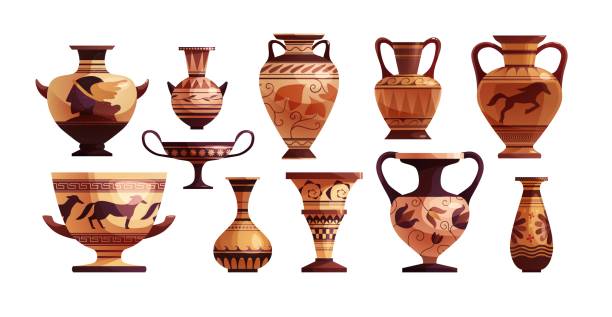Project Report For Ceramic Arts Industry
Introduction
Project report for ceramic arts industry is as follows.
Ceramic art is made using clay and other ceramic materials. It could take the form of crockery, tile, figurines, paintings, or artifacts. Ceramic art is one of the arts, particularly the visual arts. It falls within the umbrella of the plastic arts. Some ceramics are considered works of high art, while others are considered ornamental, useful, or applied art.
Ceramics are also considered artifacts in archaeology. Ceramic art can be created by a single person or by a group of individuals. In a pottery or ceramic factory, an organization of individuals creates, produces, and embellishes the art items. Pottery items are sometimes referred to as “art pottery.” Ceramicists or potters work in one-person pottery studios to create studio pottery.

The majority of historic ceramic objects were created from clay (or clay mixed with other materials), moulded, and fired, and tableware and ornamental ceramics are still made in this manner. Ceramics, as used in modern ceramic engineering, is the art and science of creating objects from inorganic, nonmetallic materials by the action of heat. It does not include glass or mosaics constructed from glass tesserae.
Ceramic art has a long history in practically all established societies, and ceramic pieces are frequently the only creative evidence remaining from extinct cultures. The shape of the object, its decoration through painting, carving, and other methods, and the glazing found on most ceramics are all elements of ceramic art that have received varying degrees of focus over time.
Project Report Sample On
Ceramic Arts Industry
Get Completely Custom Bankable Project Report
Product & Application of Ceramic Arts Industry
Ceramic arts have a long history and have spread all over the world. There is a lot of opportunity in India because artisans are cheap. Surface treatments, China painting, Slipware, Terra sigillata, Forms, tiles, Figurines, and Terracotta are examples of international ceramic arts (artworks). Studio pottery is created by amateur or professional artists or craftspeople working alone or in small groups to create one-of-a-kind or limited-edition pieces.
Typically, all stages of production are handled by the artists themselves. Studio pottery encompasses both functional and non-functional goods such as dinnerware and kitchenware. Studio potters are also known as ceramic artists, ceramists, ceramicists, or artists who work with clay as a medium.
Many studio potters make dinnerware or cookware, but an increasing number also make non-functional or sculptural products. Some studio potters prefer to be referred regarded as ceramic artists, ceramists, or simply artists. Potters from all over the world represent studio pottery.
Market Potential Of Ceramics Arts Industry
The global ceramics market was worth USD 247.4 billion in 2020, and it is expected to grow at a compound annual growth rate (CAGR) of 4.4% between 2021 and 2028.
Expenses

Product Cost Breakup

Reveneue Vs Expenses

Market Trend

The industry has seen significant growth over the past few years and has a huge potential to grow in the coming years due to various factors.
One of the primary factors driving the growth of the ceramic arts industry is the growing demand for decorative ceramic products. With the rise of the home decor industry, the demand for ceramic products like pottery, vases, and other decorative items has increased significantly. The ceramic arts industry is well-positioned to meet this demand as it has a wide range of products that can be customized according to the needs and preferences of customers.
Another key driver of the ceramic arts industry is the increasing disposable income of people worldwide. As people’s disposable income increases, they tend to spend more on luxury items like decorative ceramics. The growing middle-class population in emerging economies like China and India has also contributed to the growth of the ceramic arts industry as they are willing to spend more on luxury items.
the rise of e-commerce platforms has made it easier for artists and artisans to reach a wider audience. Online marketplaces like Etsy, Amazon, and Flipkart have made it possible for ceramic artists to sell their products to customers across the country, without having to invest in a physical store or gallery.
The rising popularity of handcrafted items has also boosted the ceramic arts industry. Handcrafted ceramic products are unique, one-of-a-kind items that are highly sought after by collectors and enthusiasts. The trend towards sustainability and eco-friendliness has also increased the demand for handcrafted ceramic products as they are perceived to be more environmentally friendly than mass-produced products.

